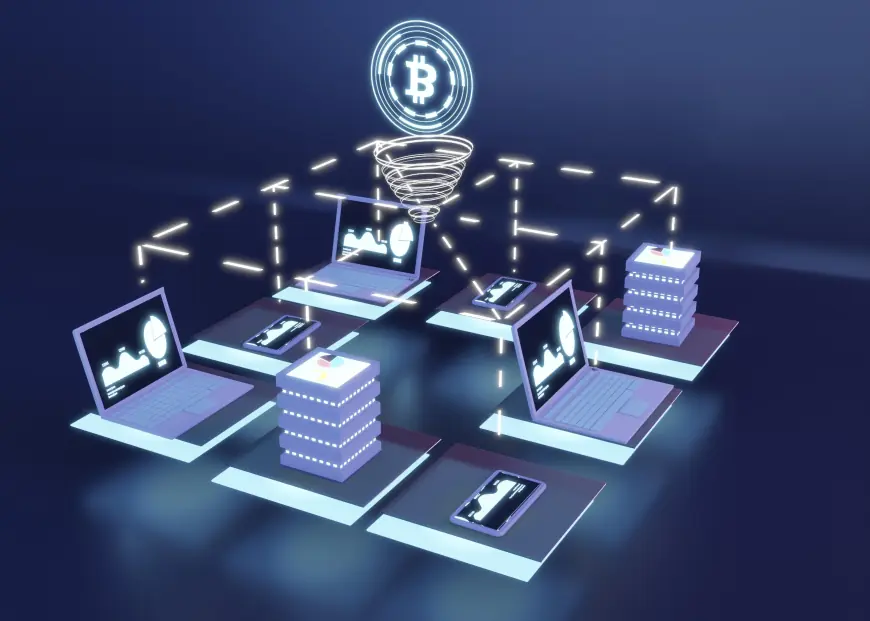How Rollups-as-a-Service Enhance Blockchain Scalability and User Experience in 2025

As blockchain technology continues to evolve, the demand for scalable and user-friendly solutions is higher than ever. While blockchains like Ethereum revolutionized decentralized finance and smart contracts, their limitations in throughput and transaction speed have posed significant challenges. Congestion, high gas fees, and slow transaction times have often hindered mass adoption and degraded the overall user experience.
In 2025, the emergence of Rollups-as-a-Service (RaaS) has become a pivotal innovation addressing these concerns. By leveraging layer 2 scaling solutions, RaaS platforms enable blockchains to process transactions more efficiently while preserving security and decentralization. This blog explores how Rollups-as-a-Service fundamentally transform blockchain scalability and enhance user experience in the modern decentralized ecosystem.
Understanding Rollups: A Layer 2 Scaling Breakthrough
Before diving into Rollups-as-a-Service, it’s essential to understand what rollups are and why they matter. Rollups are a class of layer 2 solutions designed to alleviate the burden on base layer blockchains by bundling or “rolling up” multiple transactions into a single batch. These batched transactions are then submitted to the main blockchain in compressed form, significantly reducing data load and gas fees.
There are two primary types of rollups: Optimistic Rollups and Zero-Knowledge (ZK) Rollups. Optimistic Rollups assume transactions are valid by default and use fraud proofs to detect errors, while ZK Rollups use cryptographic proofs to validate transactions instantly. Both types aim to increase throughput dramatically without compromising security or decentralization.
By offloading transaction processing to layer 2, rollups multiply blockchain capacity from a handful of transactions per second to thousands or even tens of thousands, a game-changer for developers and users alike.
The Rise of Rollups-as-a-Service: Simplifying Access to Scalability
While rollups provide immense benefits, integrating these complex technologies remains a challenge for many blockchain projects, especially startups and enterprises with limited technical resources. This gap gave birth to Rollups-as-a-Service platforms in 2024-2025, which package rollup technology into easy-to-use services accessible through APIs or SDKs.
Rollups-as-a-Service offer turnkey solutions that abstract away the technical intricacies of deploying and managing rollups. They allow developers to leverage layer 2 scalability instantly, without building the infrastructure from scratch. With RaaS, even small teams can benefit from faster transactions, lower fees, and enhanced scalability.
By commoditizing rollup technology, RaaS platforms democratize access to layer 2 benefits, accelerating blockchain innovation and adoption on a global scale.
How Rollups-as-a-Service Improve Blockchain Scalability
Increasing Transaction Throughput
One of the core ways RaaS enhances blockchain scalability is by multiplying transaction throughput. Traditional layer 1 blockchains process transactions sequentially and face inherent limitations on how many they can handle per second. Rollups batch hundreds or thousands of transactions off-chain and then anchor only summary proofs on-chain.
This batching dramatically boosts throughput, enabling decentralized applications (dApps) and decentralized finance (DeFi) platforms to serve millions of users without delays. Rollups-as-a-Service streamline the integration of these batching mechanisms, allowing projects to scale their user base seamlessly.
Reducing Network Congestion and Gas Fees
Network congestion directly contributes to rising transaction costs, often pricing out smaller users or microtransactions. Rollups alleviate congestion by moving most transaction computations off the main chain, which reduces on-chain traffic and lowers gas fees.
RaaS providers manage the rollup infrastructure efficiently, further optimizing cost savings. By using RaaS, projects can offer affordable transactions to users, creating a more inclusive ecosystem and encouraging higher transaction volumes.
Enhancing Interoperability and Cross-Chain Operations
Many RaaS platforms in 2025 also facilitate interoperability by supporting rollups across multiple blockchains. This means developers can deploy scalable solutions that interact across Ethereum, Binance Smart Chain, Polygon, and others without custom complex code.
This cross-chain capability is critical for the future of Web3, where users expect seamless asset transfers and interactions across various networks. Rollups-as-a-Service simplify cross-chain integration by providing unified APIs that work across different blockchains, further expanding scalability beyond a single network.
Elevating User Experience with Rollups-as-a-Service
Faster Transaction Finality and Confirmation Times
User experience in blockchain applications heavily depends on how quickly transactions are confirmed. In legacy systems, confirmation times can range from minutes to even hours during congestion, causing frustration.
Rollups reduce these confirmation times by processing transactions off-chain and submitting compressed proofs to the mainnet, resulting in near-instant finality. RaaS platforms ensure these performance gains are easily integrated, enabling dApps to provide smooth and responsive interfaces akin to traditional web apps.
Lower Transaction Costs for Everyday Users
High transaction fees are one of the biggest barriers for mass adoption of blockchain applications. Rollups significantly reduce fees by bundling transactions and minimizing on-chain data.
With Rollups-as-a-Service, projects can pass these cost savings directly to users without having to invest in infrastructure development. This affordability opens doors for everyday users to participate in decentralized finance, gaming, NFTs, and social applications without worrying about prohibitive costs.
Seamless Developer Experience and Faster Time-to-Market
Beyond end users, RaaS also benefits developers by drastically simplifying layer 2 integration. Previously, launching a rollup required specialized knowledge in cryptography, consensus algorithms, and blockchain internals.
RaaS platforms provide developer-friendly tools, comprehensive documentation, and managed infrastructure, allowing teams to focus on building features instead of scalability challenges. This faster time-to-market accelerates innovation cycles and enhances the overall ecosystem quality, ultimately benefiting users.
The Role of Security and Trust in Rollups-as-a-Service
Preserving Layer 1 Security Guarantees
A common concern about scaling solutions is security trade-offs. Rollups maintain strong security by posting proofs or summaries to the layer 1 blockchain, inheriting its robust security guarantees.
RaaS providers implement these mechanisms rigorously, ensuring that despite increased throughput, the system remains trustless and censorship-resistant. This security assurance is critical for applications handling significant assets, such as DeFi protocols and marketplaces.
Transparency and Auditing
Transparency is vital for building user trust in any blockchain solution. Many RaaS platforms provide open-source codebases, real-time monitoring dashboards, and verifiable proofs to maintain transparency.
By exposing rollup operations publicly, RaaS platforms allow independent audits and community scrutiny, reinforcing user confidence. This openness complements the decentralized ethos of blockchain and reassures users that rollups remain secure and reliable.
Case Studies: Real-World Applications Leveraging Rollups-as-a-Service
DeFi Protocols Scaling to Millions of Users
Several leading DeFi platforms in 2025 have adopted Rollups-as-a-Service to scale liquidity pools, lending protocols, and decentralized exchanges. By integrating RaaS, these platforms can handle a surge in users without compromising speed or cost, offering competitive trading experiences that rival centralized exchanges.
These protocols report substantial increases in user retention and transaction volumes, driven by faster execution and lower fees enabled through rollups.
NFT Marketplaces Enabling Microtransactions
NFT platforms have also benefited immensely from RaaS, particularly for marketplaces where small transactions are common. Rollups allow these platforms to offer low-cost minting, buying, and selling experiences, encouraging broader participation from artists and collectors.
With RaaS handling scalability, NFT marketplaces have transformed from niche applications into mainstream cultural hubs in 2025.
Gaming and Metaverse Projects Achieving Real-Time Interactions
Blockchain gaming and metaverse projects demand real-time interactions and high throughput to deliver immersive experiences. Rollups-as-a-Service provide the scalability backbone for these projects by supporting fast, low-cost transactions required for in-game economies, asset transfers, and social interactions.
These platforms leverage RaaS to bridge blockchain and traditional gaming experiences, attracting millions of users globally.
Future Trends: What’s Next for Rollups-as-a-Service?
Integration of AI and Automation
Looking ahead, the fusion of AI with Rollups-as-a-Service will further optimize scalability and user experience. AI algorithms can dynamically manage transaction batching, gas fee optimization, and fraud detection, making rollups even more efficient and secure.
Automation will also reduce human intervention in rollup maintenance, lowering operational risks and costs.
Expansion to Enterprise and Cross-Industry Use Cases
While DeFi and gaming dominate current rollup usage, enterprises across supply chain, healthcare, and finance are increasingly adopting RaaS for secure and scalable blockchain applications. Rollups will become foundational technology for multi-party data sharing, compliance, and traceability at scale.
Rollups-as-a-Service platforms will evolve to provide industry-specific customization, compliance tools, and integrations, driving blockchain’s real-world impact.
Enhanced Cross-Layer Solutions and Hybrid Models
Future developments may see deeper integration between layer 1, layer 2 rollups, and even layer 3 protocols, creating hybrid solutions that maximize scalability, privacy, and security simultaneously. RaaS providers will play a crucial role in orchestrating these layers, providing seamless developer and user experiences across the blockchain stack.
Conclusion:
In 2025, Rollups-as-a-Service have emerged as a transformative force in blockchain scalability and user experience. By abstracting complex layer 2 technologies into accessible services, RaaS platforms empower developers and projects to scale effortlessly, reduce costs, and deliver fast, reliable applications to end users.
The combined benefits of increased throughput, lower fees, enhanced interoperability, and strong security guarantees make rollups indispensable for the next generation of blockchain solutions. As the blockchain ecosystem continues to mature, Rollups-as-a-Service will undoubtedly remain at the forefront of innovation, unlocking new possibilities and accelerating mass adoption worldwide.
What's Your Reaction?
 Like
0
Like
0
 Dislike
0
Dislike
0
 Love
0
Love
0
 Funny
0
Funny
0
 Angry
0
Angry
0
 Sad
0
Sad
0
 Wow
0
Wow
0

















































